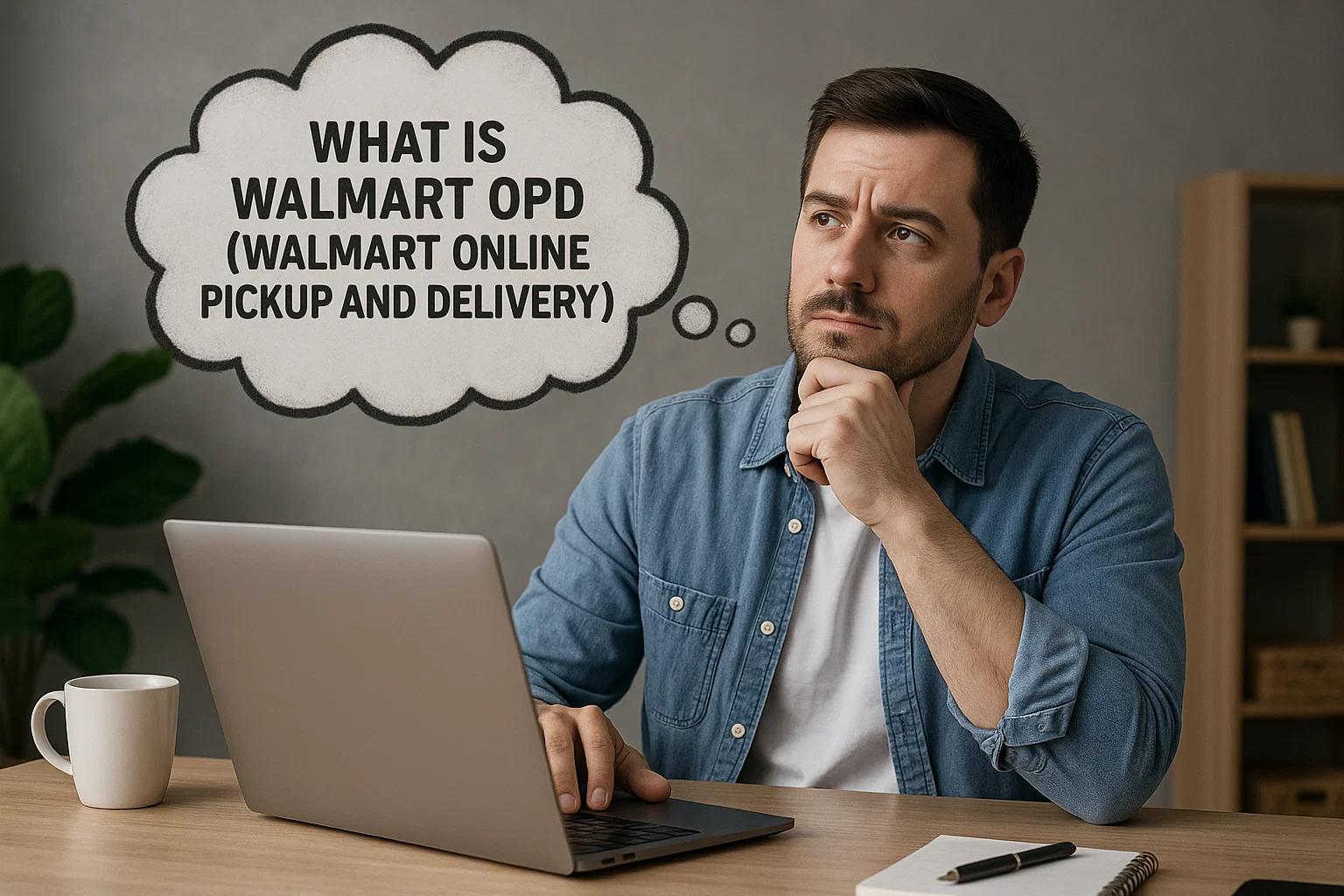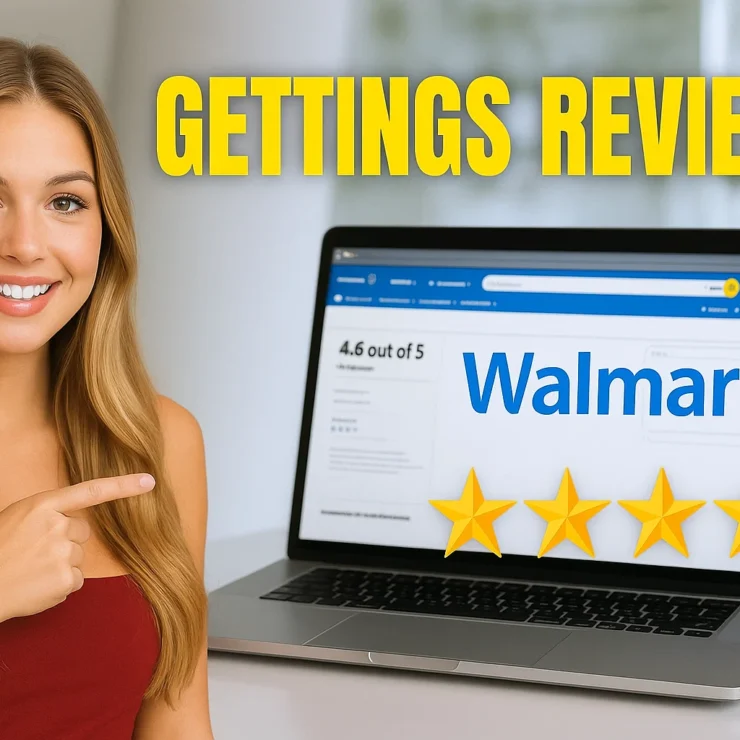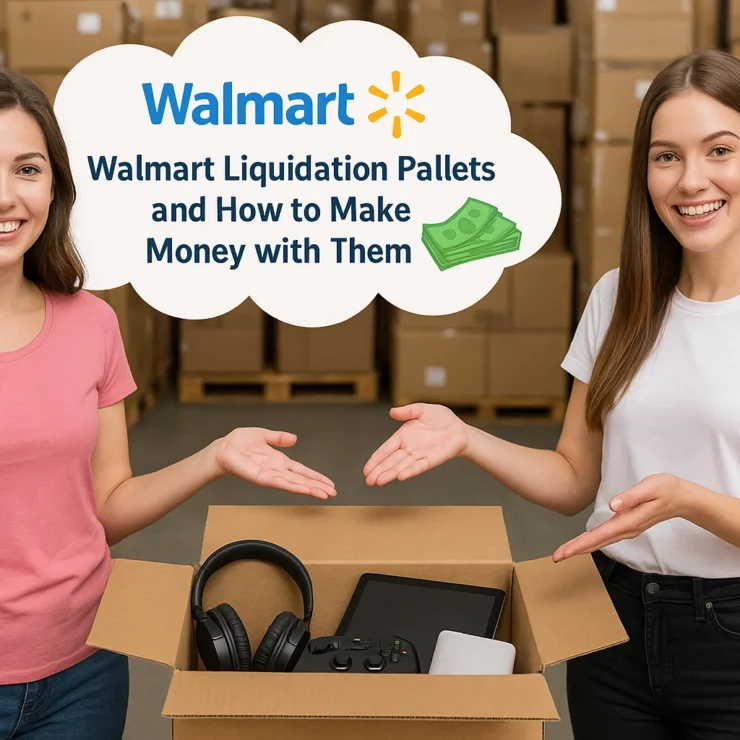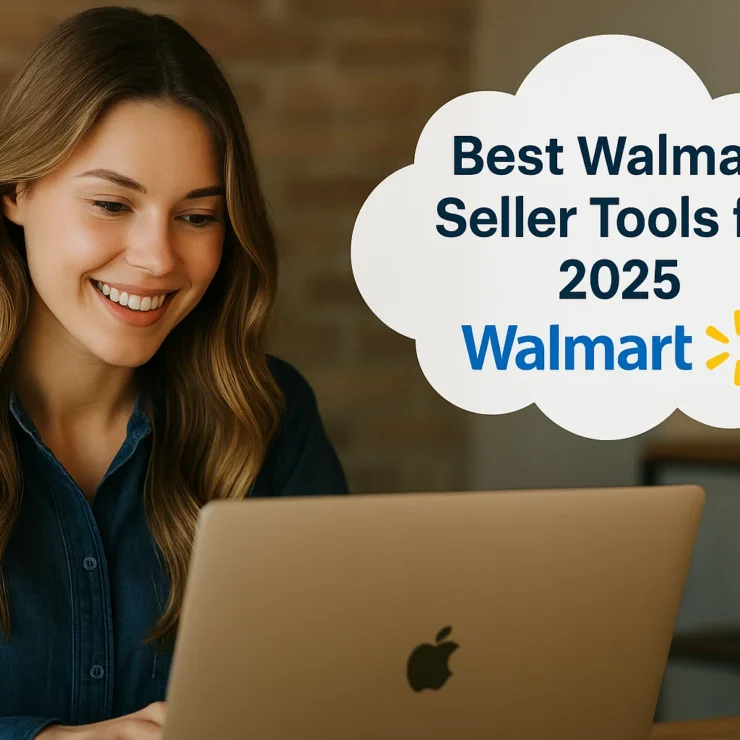In today’s fast-paced eCommerce landscape, consumer expectations for convenience, speed, and flexibility are at an all-time high. Businesses that can meet these demands not only thrive — they lead. One of the most powerful tools enabling that transformation is Walmart OPD, or Online Pickup and Delivery.
Walmart, the world’s largest retailer, has rapidly evolved from a traditional brick-and-mortar powerhouse to an innovative omnichannel marketplace. With Walmart OPD, sellers can tap into this transformation and reach customers not only online but also in their local communities — all without the need for third-party logistics or massive shipping infrastructure.
But what exactly is Walmart OPD, and how does it benefit third-party sellers on the Walmart Marketplace? In this blog, we’ll unpack the full meaning of OPD Walmart, show you how it works, outline the seller benefits, and walk through how to get started. Whether you’re already selling on Walmart or considering expansion, understanding OPD could be your next strategic move to boost visibility, increase conversions, and grow profitably.
What Is Walmart OPD?
Walmart OPD, short for Online Pickup and Delivery, is a hybrid fulfillment and shopping solution offered by Walmart that allows customers to order items online and either pick them up at a local store or have them delivered directly to their homes.
From the customer’s point of view, OPD provides flexibility: they can choose store pickup for free or opt for home delivery for added convenience — all fulfilled by their local Walmart store. From a seller’s perspective, OPD Walmart represents a key opportunity to list eligible items that can be fulfilled through Walmart’s own in-store inventory network or through third-party seller logistics, depending on the product setup.
OPD Walmart Meaning in Context
The “Online Pickup and Delivery” model is Walmart’s response to the modern shopper’s demand for fast, flexible, and low-cost (or free) fulfillment. It’s designed to bridge the gap between eCommerce and physical retail, using Walmart’s vast network of over 4,700 U.S. stores as micro-fulfillment centers.
When a customer places an OPD order, Walmart’s algorithm determines the most efficient fulfillment method: either an associate picks the item from the shelves of a nearby store for pickup, or it’s packed and delivered through Walmart’s local delivery system.
For sellers, this means:
More exposure on product listings via “Pickup Today” and “Delivery” tags
Better search visibility on Walmart.com and the Walmart app
Higher conversion rates, since customers trust and prefer fast, local fulfillment options
This model helps Walmart compete directly with Amazon’s same-day and next-day delivery — while giving Marketplace sellers a way to reach buyers without the high costs of traditional eCommerce logistics.
If you’re just starting out with Walmart, check out our detailed guide to learn how to sell products on Walmart.
Walmart OPD vs. Walmart OGP
If you’re new to selling or shopping through Walmart’s online services, you might come across two commonly used acronyms: Walmart OPD and Walmart OGP. While both refer to order fulfillment models tied to Walmart’s eCommerce and physical store infrastructure, there are some key differences that are important for both sellers and shoppers to understand.
1. Walmart OPD (Online Pickup & Delivery)
As explained earlier, Walmart OPD stands for Online Pickup and Delivery. It encompasses both pickup and home delivery options and is designed to serve customers who order online and either pick up the item themselves or have it delivered directly from a local Walmart store.
Key Features of Walmart OPD:
Supports both pickup and delivery.
Orders are fulfilled by in-store associates or delivery partners.
Products are usually ready within hours.
Available for groceries and general merchandise.
Sellers can benefit from Buy Box preference, local search visibility, and higher conversion when products are tagged “Available for Pickup/Delivery.”
2. Walmart OGP (Online Grocery Pickup)
On the other hand, Walmart OGP refers specifically to Online Grocery Pickup. It is a subset of Walmart OPD, focused solely on grocery orders. This service allows customers to order groceries online and pick them up at a designated time from a nearby store without ever leaving their vehicles.
Key Features of Walmart OGP:
Focused exclusively on groceries and consumables.
Pickup only — no home delivery is included under OGP.
Customers receive a dedicated pickup slot.
Walmart associates hand-pick groceries and pack them for car-side delivery.
Not all third-party sellers can list products under OGP — only select grocery suppliers.
OPD vs. OGP: A Side-by-Side Comparison
| Feature | Walmart OPD | Walmart OGP |
|---|---|---|
| Full Form | Online Pickup and Delivery | Online Grocery Pickup |
| Product Categories | Groceries + General Merchandise | Groceries Only |
| Fulfillment Options | Pickup & Home Delivery | Pickup Only |
| Who Uses It | Marketplace Sellers + Walmart Stores | Walmart Stores Only |
| Visibility on Walmart.com | Appears with “Pickup” or “Delivery” tags | Appears under “Grocery” filter |
| Seller Eligibility | Most Marketplace Sellers | Limited to approved grocery suppliers |
Why It Matters for Sellers
If you’re selling general merchandise, you’ll likely be using Walmart OPD. It offers broader reach and lets you list products that benefit from Walmart’s local fulfillment services, increasing discoverability. For sellers in food and beverage categories, getting into Walmart OGP may require special approval, but it comes with access to a highly loyal and recurring customer base.
A Seller’s Guide to Walmart’s Private Label Trends in 2025
What Does Walmart OPD Mean for Suppliers?
Walmart OPD (Online Pickup and Delivery) transforms traditional suppliers into omnichannel partners. If your product is available in a Walmart store, it’s now expected to be accessible for pickup or home delivery through the Walmart digital platform. This means visibility extends beyond the physical shelf to Walmart.com and the mobile app.
For suppliers, this shift brings both new responsibilities and new opportunities. Items must now be properly configured for online shopping—including accurate product titles, detailed descriptions, high-quality images, and complete attribute data. This requires working within Retail Link or connecting through a third-party content service provider.
Even if you aren’t shipping items directly from a warehouse or participating in the Walmart Marketplace, customers can still find and purchase your items online for local fulfillment.
In essence, Walmart expects all suppliers to support its omnichannel strategy—bridging the gap between physical stores and digital convenience to meet evolving customer expectations.
How to Enroll in Walmart OPD Program
Walmart’s OPD (Online Pickup & Delivery) program allows customers to order items online and either pick them up in-store or have them delivered to their home. For sellers, participating in OPD depends on whether you are a first-party supplier or a third-party marketplace seller.
First-Party (1P) Walmart Suppliers
1P suppliers (vendors selling directly to Walmart) use Walmart’s Retail Link (Supplier One/Item 360) portal for item setup. Walmart requires that any product stocked in stores have a corresponding online listing, so completing item creation in Retail Link automatically makes the item OPD-eligible. There is no separate “OPD enrollment” form – simply ensure your items are set up as omnichannel in Retail Link:
Product listing: In Retail Link (Supplier One/Item 360), create each SKU with full product content (title, description, images, etc.) Supply valid identifiers (UPC/GTIN) and fill all required fields.
Inventory and availability: Verify that products have inventory in Walmart’s system (distribution centers or stores). By default, any item on a Walmart shelf is available for pickup or delivery (subject to category restrictions like alcohol, medications, oversized items).
Online configuration: During item setup, mark the product as “Online Available.” Once the listing is active, customers can find the item on Walmart.com and select store pickup or home delivery.
Seamless integration: Walmart expects store items to be discoverable online. No additional sign-up is needed – maintaining accurate item pages in Retail Link (including online pricing or weight fields) automatically enrolls the item in OPD.
Third-Party (3P) Marketplace Sellers
3P sellers (Walmart Marketplace vendors) must first be approved and then set up products via the Walmart Seller Center or API. These sellers manage listings and inventory separately from Retail Link. Key steps for OPD are:
Marketplace setup: Complete the Walmart Marketplace onboarding and list your products with complete content (titles, descriptions, images, GTINs). Items must be added through Seller Center (Item 360 is not used for 3P items).
Fulfillment choice: Select a fulfillment method that enables fast delivery. For example:
Walmart Fulfillment Services (WFS): Ship inventory to Walmart fulfillment centers. WFS items automatically carry the “Two-Day Delivery” tag and qualify for expedited OPD delivery.
Two-Day Delivery (Deliverr/API): Use an approved two-day shipping partner or integrate directly so your products meet Walmart’s two-day delivery standards. This also earns the Two-Day badge.
Seller-Fulfilled: If you fulfill from your own warehouse, enroll in Walmart’s two-day shipping program. Configure your shipping templates in Seller Center to meet OPD delivery deadlines.
Pickup & Delivery settings: In Seller Center, enable the “Pickup & Delivery” channel for your listings. Ensure products are in stock and win the Buy Box; items must be base (non-variant) products to be visible in OPD searches. (By default, Marketplace items ship directly to customers and are not available for in-store pickup.)
Local inventory (if applicable): If you have brick-and-mortar stores, consider Walmart’s invitation-only LocalFinds program. LocalFinds lets eligible sellers list store inventory for same-day pickup or delivery through Walmart’s network.
Maintain inventory: Keep your Seller Center inventory updated via API or bulk uploads so Walmart can fulfill OPD orders. Regularly monitor performance metrics (on-time shipping, etc.) to remain in good standing for OPD fulfillment.
Want to understand how Walmart rollbacks affect 1P vs 3P sellers? Discover which selling model aligns best with your goals in our in-depth Walmart 1P vs 3P guide.
Advantages of Walmart OPD for Suppliers
Walmart OPD (Online Pickup and Delivery) isn’t just a convenience feature for shoppers—it’s also a strategic growth lever for suppliers. While it may require some initial setup through Retail Link and product content optimization, the long-term benefits make it a highly valuable program for suppliers looking to boost sales, reach new customers, and strengthen their presence both online and in-store.
Here are the top benefits suppliers can expect when enrolling products in Walmart OPD:
Enhanced Product Awareness
Even if a shopper doesn’t place an order for pickup or delivery, they’re likely researching online before visiting a store. Items available through Walmart OPD are shown in local search results, increasing visibility both online and in-store.
By enabling your products for OPD, you’re creating digital shelf space that improves brand exposure. A well-optimized online listing allows your product to appear in search results for customers browsing Walmart.com or the app—even if their final purchase is made in the physical store.
Pro Tip: Optimize your item pages with rich images, key features, and competitive pricing to rank higher and attract more clicks.
Bonus Sales Through Substitutions
Walmart’s substitution system is another hidden advantage of the OPD model. If a customer orders a competitor’s item and it’s out of stock, Walmart offers a similar product as a substitute.
If your item is set up for OPD and meets the right specs, it could be automatically offered in place of an unavailable competitor’s product—giving you the chance to win over a new customer by default.
This “passive conversion” is only possible if your product has inventory in-store and is eligible for OPD, so maintaining strong On-Time In-Full (OTIF) metrics is critical.
Growing Customer Base
Walmart OPD has been widely embraced by both core Walmart customers and newer, more affluent demographics seeking convenience. Since the pandemic, the preference for store pickup and delivery has only grown stronger.
By participating in OPD, you open up your product to a broader audience—including shoppers who may never have otherwise encountered your brand in-store. This allows you to build loyalty with new customer segments who prioritize convenience, speed, and digital browsing.
You can also pair OPD listings with Sponsored Product campaigns to drive even more exposure and conversion.
To maximize your Walmart OPD performance, understanding how to win the Walmart Buy Box is crucial—learn proven strategies in our detailed 2025 guide on Walmart Buy Box and how to win it.
Do All Items Qualify for Walmart OPD?
Not all items are eligible for Walmart OPD (Online Pickup and Delivery). To qualify, products must meet specific criteria set by Walmart to ensure a seamless experience for both customers and store operations.
Primarily, items must be stocked in physical Walmart stores, as OPD fulfillment relies on in-store inventory. If your product is not available in a specific store, it won’t be shown to customers in that location for pickup or delivery.
Additionally, products must fall within acceptable categories—hazardous materials, oversized goods, or restricted items may be excluded. All eligible items must also meet Walmart’s content quality standards, including clear images, accurate descriptions, and valid barcodes (UPC or GTIN).
Suppliers must keep products in-stock and maintain compliance with Walmart’s On-Time In-Full (OTIF) and inventory accuracy standards. Failure to do so can disqualify items from OPD placement.
For sellers, verifying item eligibility in Retail Link is the best way to ensure inclusion in OPD listings.
Conclusion: Walmart OPD
Walmart OPD (Online Pickup and Delivery) is not just a fulfillment method—it’s a strategic evolution that blends the convenience of online shopping with the reliability of Walmart’s in-store inventory. For suppliers, this model opens the door to greater product exposure, increased sales opportunities through substitutions, and access to a broader customer base.
As consumer expectations shift toward fast, flexible, and seamless shopping experiences, suppliers must adapt by embracing omnichannel practices. From ensuring product content is optimized for digital browsing to maintaining strong in-stock performance, participation in Walmart OPD can be a growth catalyst for brands willing to evolve.
By understanding what Walmart OPD is, how it works, and what’s required to succeed, suppliers can position themselves for long-term success in Walmart’s growing ecosystem.
Pairing Walmart OPD with effective pricing strategies like Walmart Rollbacks can boost visibility and conversions—discover why Rollbacks matter for sellers in our in-depth guide.
FAQ's: Walmart OPD
What is Walmart OPD?
Walmart OPD stands for Walmart Online Pickup and Delivery. It’s an omnichannel fulfillment program that allows customers to shop online and choose between two convenient options: picking up their orders curbside at a local Walmart store or having them delivered to their home. For suppliers, Walmart OPD means their in-store products can also be sold through Walmart’s digital platform, increasing visibility and sales potential. It requires suppliers to provide complete online item data such as images, descriptions, and pricing—even if the item is only sold in-store.
Is Walmart OPD available to all suppliers?
No, Walmart OPD is generally available to suppliers whose products are already carried in Walmart stores. Items must meet specific eligibility criteria and be properly configured in Retail Link with complete online content (images, descriptions, pricing, etc.).
How do I enable my products for Walmart OPD?
To enable products for OPD, suppliers must work through Walmart’s Retail Link platform to set up items with the necessary online attributes. This includes creating accurate listings with images, descriptions, and logistics data. Walmart’s supply chain and merchant teams must approve the items for OPD eligibility.
Contact Us for Tailored Solutions – Stores Automation:
Ready to transform your Walmart store and achieve big wins? Contact us at Stores Automation for personalized solutions that leverage the power of automation for your business. Reach out to us at 302-204-8244 or via email at info@storesautomation.com. Sign up and Embark on the path to e-commerce success with Stores Automation – where small changes lead to big wins!





